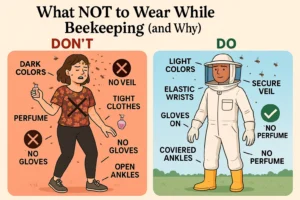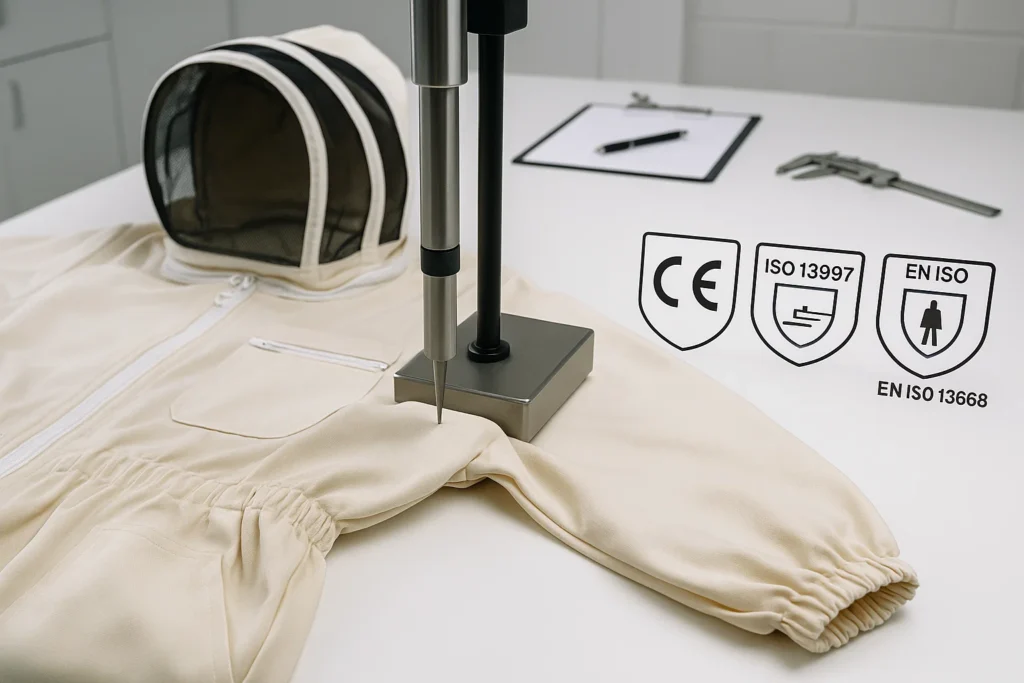
🐝 Gear Up. Stay Safe. Protect the Hive. 🌼
Before we dive into how Protective Gear works, let’s break down the biology of a bee sting. Bees aren’t naturally aggressive — they only sting as a last line of defense. However, when they do, their stingers pack some serious power.
A bee’s stinger isn’t just a needle — it’s a complex, venom-delivering mechanism designed to maximize damage. Let’s explore what makes it so effective:
💡 Fun Fact: While a single sting might seem minor, multiple stings — or even one for someone with a bee allergy — can trigger a serious health crisis.
Now that we understand the threat, let’s see how bee suits act as your first — and sometimes only — defense. High-quality Protective Gear isn’t just about fabric thickness. It’s a science-backed system designed to stop stingers, block bee access, and keep you cool and mobile.
The fabric is the heart of any effective bee suit. Most modern suits use a three-layer system:
👉 Key Insight: Since most bee stingers are only 1.5–3mm long, this layered distance is crucial for real sting prevention.
Even the smallest hole can let in a bee. That’s why good Protective Gear includes:
🧵 Advanced stitching methods like double-needle seams and reinforced darting ensure durability and flexibility without compromising safety.
Bees often target the face. That’s why veils and hoods matter so much.
💡 Pro Tip: Before stepping into the hive, always double-check that your veil is zipped, sealed, and tucked securely.
Your hands do the work — so they need extra protection. Most Protective Gear includes:
🎯 A sting on your hand can swell quickly, so never skimp on glove quality.
Most beekeepers focus on their upper body — but many stings happen from below. Protect your legs by wearing:
This part of your gear may feel minor, but it can make or break your experience.
When companies claim their suits are “sting-proof,” it’s not just a marketing gimmick — it’s measurable. High-quality Protective Gear undergoes rigorous testing like:
✅ Look for suits with official safety certifications such as:

Absolutely — and sometimes even more. In 2025, sustainable Protective Gear includes:
Eco-conscious materials don’t just protect the planet — they protect you too.
Believe it or not, your attitude affects bee behavior. When you trust your suit, you stay calmer. Calm movements and steady breathing reduce bee agitation — and that means fewer stings.
So wearing effective Protective Gear doesn’t just physically guard you — it helps you mentally stay composed.
Your bee suit isn’t just clothing. It’s your armor, your lab-tested protection, and your peace of mind. Understanding the science behind its design empowers you to make smarter choices — and safer visits to the hive.
Every flap, zipper, and layer is there for a reason. Trust your Protective Gear, and let it work for you — one sting at a time.
